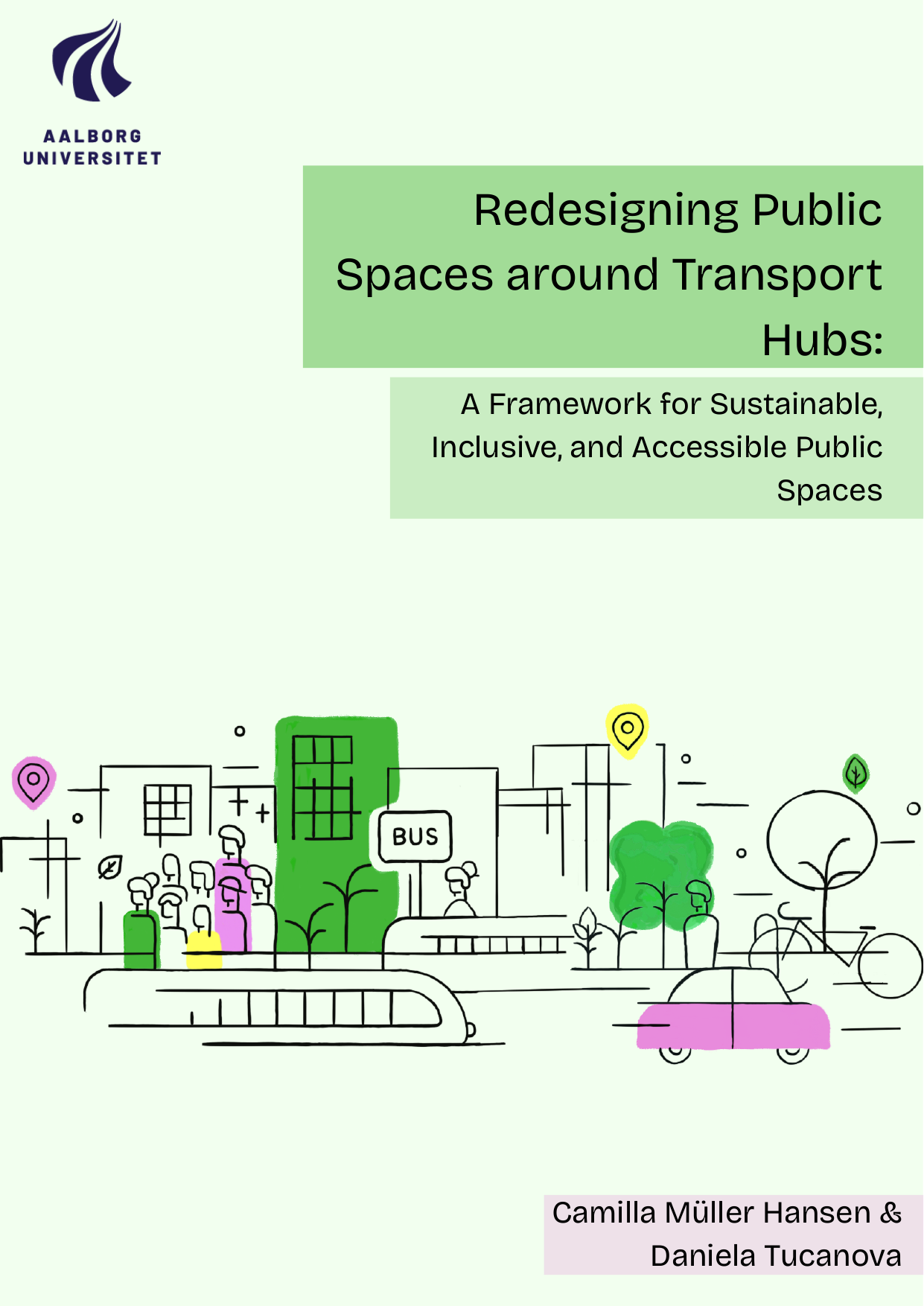
Redesigning Public Spaces around Transport Hubs: A Framework for Sustainable, Inclusive, and Accessible Public Spaces
Authors
Term
4. term
Education
Publication year
2025
Submitted on
2025-05-27
Pages
92
Abstract
This project investigates how public areas around transport hubs can be redesigned to promote environmental sustainability, social inclusion, and accessibility. The main outcome is a Framework developed to support municipal urban planners before and throughout the design process. Lyngby Transport Hub in Denmark serves as a case study, where qualitative data collected through mixed used methodologies has formed the empirical foundation. A mid-phase collaboration with the Dutch municipality of Roermond provided external feedback to refine the Framework’s applicability. The Framework is grounded in several theoretical perspectives. Multi-Level Perspective is used to understand urban transitions, with the current planning context as the regime, climate challenges and mobility needs as landscape pressures, and the Framework itself as a niche innovation. While Nudge Theory guides decision-making towards maintaining a design without limiting user freedom, Actor-Network Theory helps understand the relationship between the human and non-human participants in the construction of a public space. The Framework outlines Five Concepts: Social Factors, Environmental Factors, Wayfinding \& Navigation, Accessibility, and Active Mobility Infrastructure. It provides practical tools for municipalities to evaluate and improve spaces around Transport Hubs. While developed from a single case, the Framework is intended as a complementary planning tool, with the potential for broader application. The study concludes by reflecting on the Framework’s strengths and limitations, its foundation in regenerative urban design and SDG principles, and the need for further research and testing across different contexts.
Keywords
Documents
